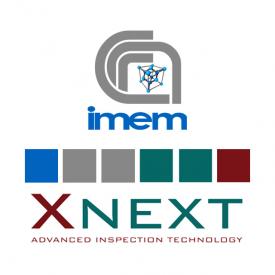IMEM collaborates with Xnext s.r.l. on the investigation and characterization of CdTe/CZT-based linear array detectors for X-ray scanners. Such devices find application mainly in industry (inspection of food or pharmaceutical products) and security (luggage inspection).

The collaboration regards several aspects.
- Material characterization.
The choice of the optimal material for this application depends on multiple factors. By investigating the properties of the material (e.g., electric mobility and carrier lifetime, current/voltage behaviour, polarization) it is possible to select the best candidate.
- Fabrication methods.
IMEM can realize detectors from the raw material, dealing with all the delicate aspects of the fabrication that are required for a good final performance. These processes consist in crystal cutting, surface lapping and polishing, contact deposition, electrode patterning with photolithographic techniques and bonding.
- Design and realization of custom detector.
IMEM developed a home-made simulation tool to model the response of custom detector. During the prototypation step, this tools allows us to optimize the pitch of the detector (distance from the centres of two adjacent pixels), dimensions and shape of the pixel as a function of the final performance. After this step, the device is realized.
- Study of the performance in particular condition.
Industrial scanner operate in extreme conditions, in terms of incoming flux, because they have to adapt to industrial production rhythms. However, this generally introduce distorsions in the measured signal, preventing a correct analysis. IMEM is developing algorithms that are able to correct these distortions. Linear array are characterized also by undesired effects on the pixel boundaries which mask the spectral information in the low energy range (5-20 keV). IMEM investigates these effects with the help of the simulation tool and experimental measurements, also in large international facilities like the Diamond Light Source (Didcot, UK).









